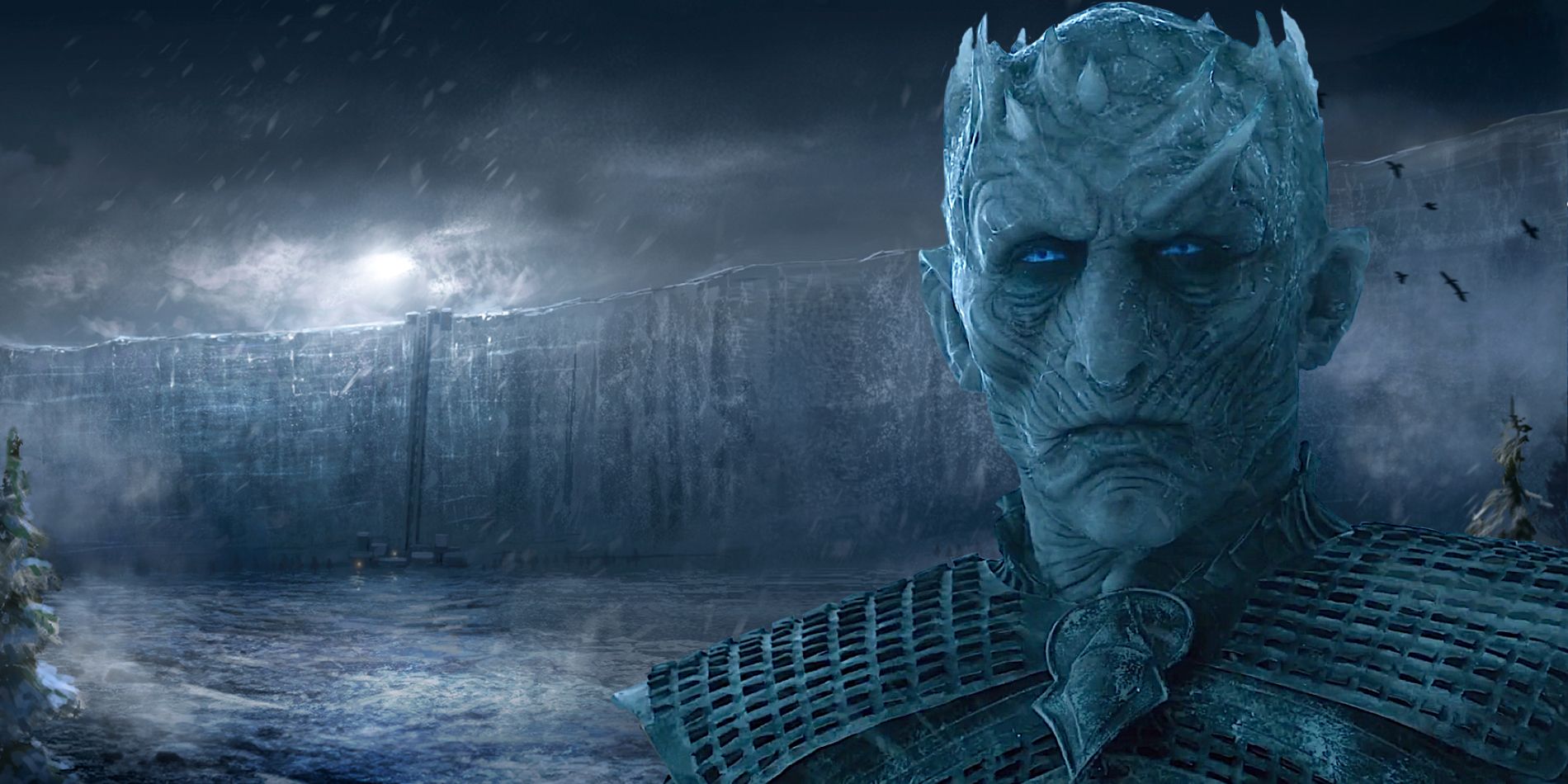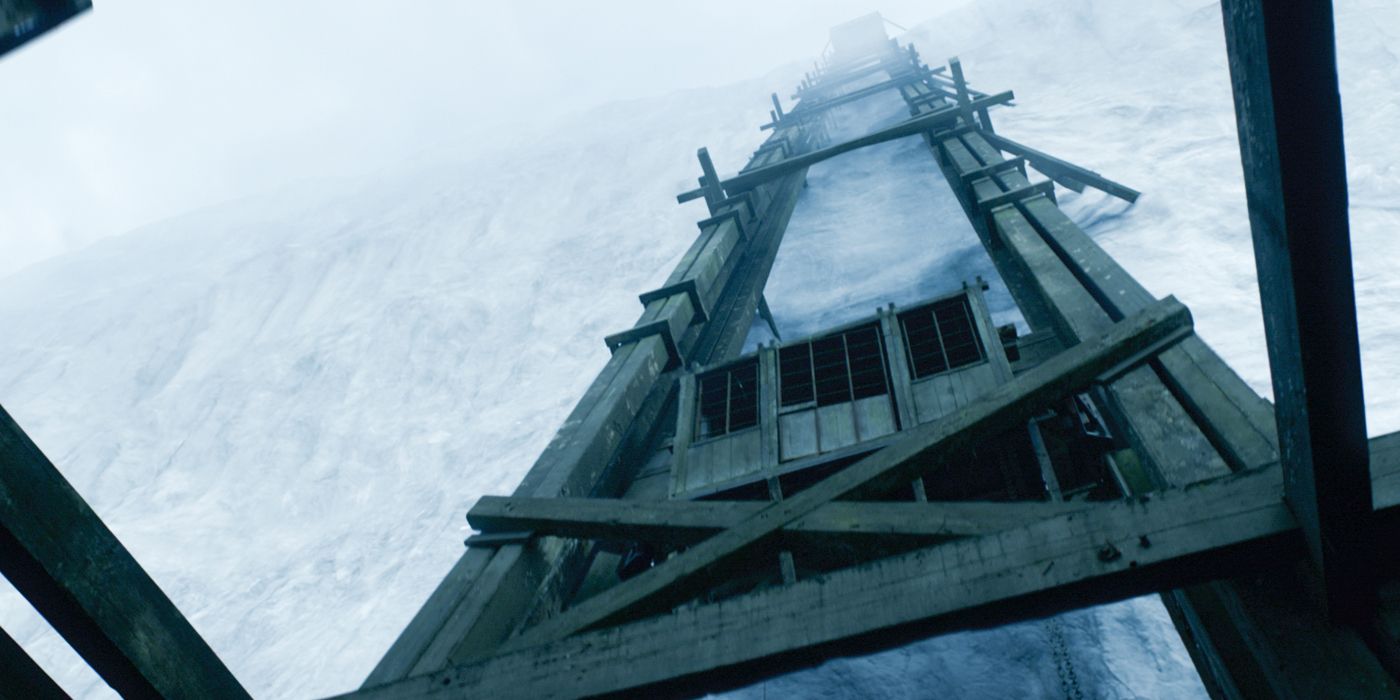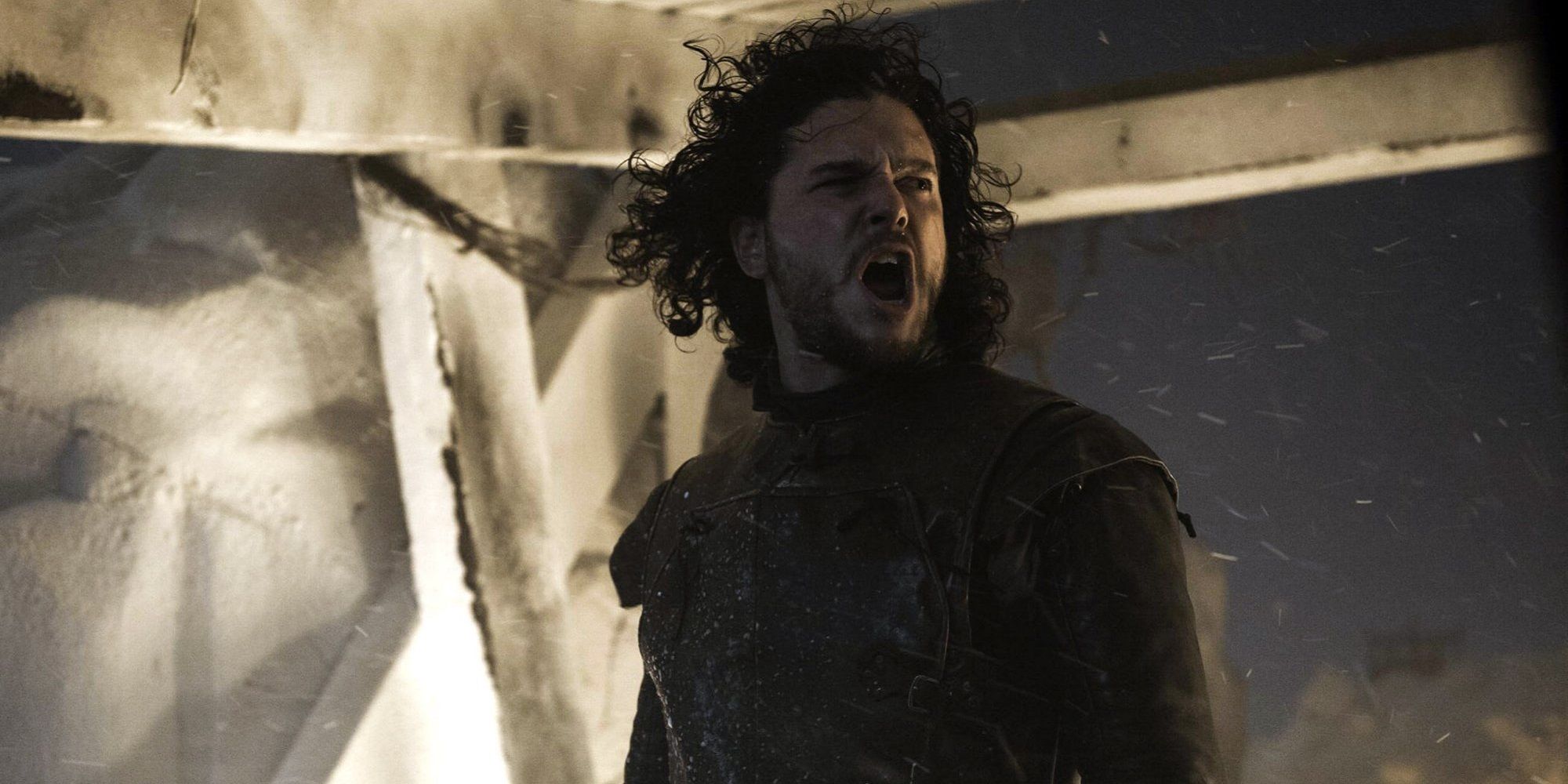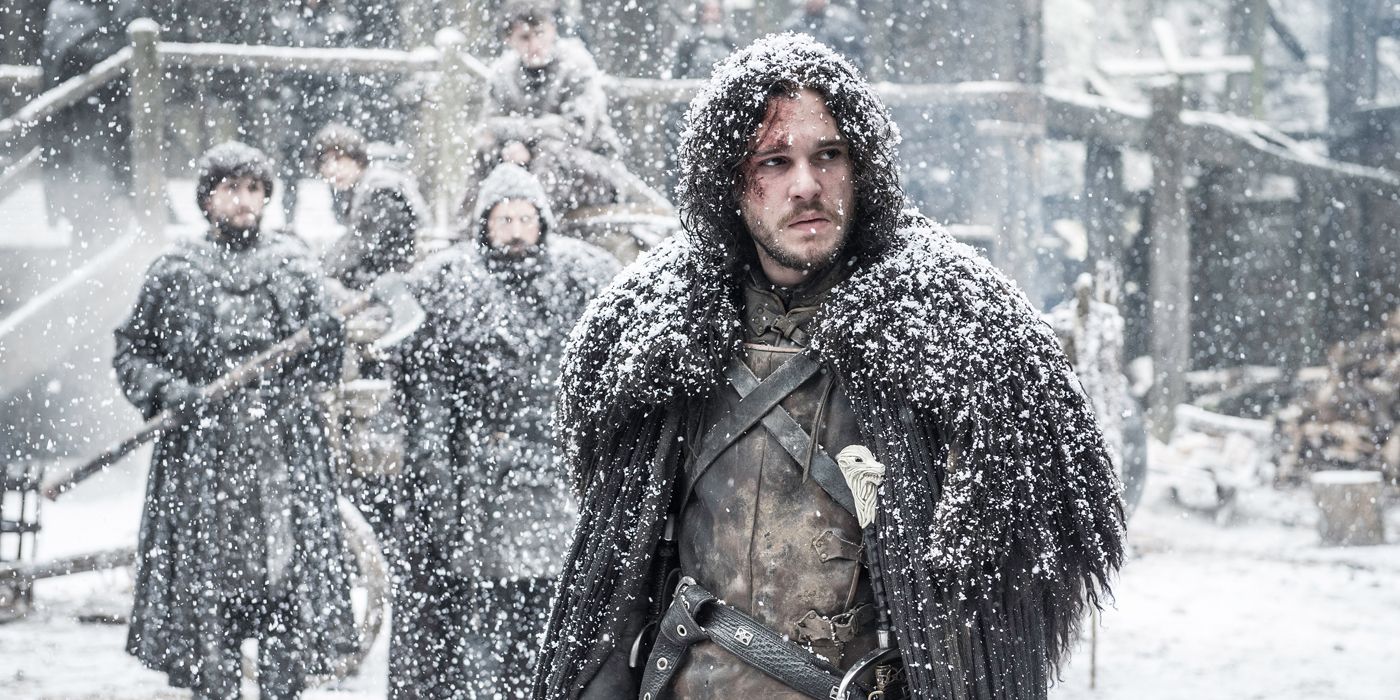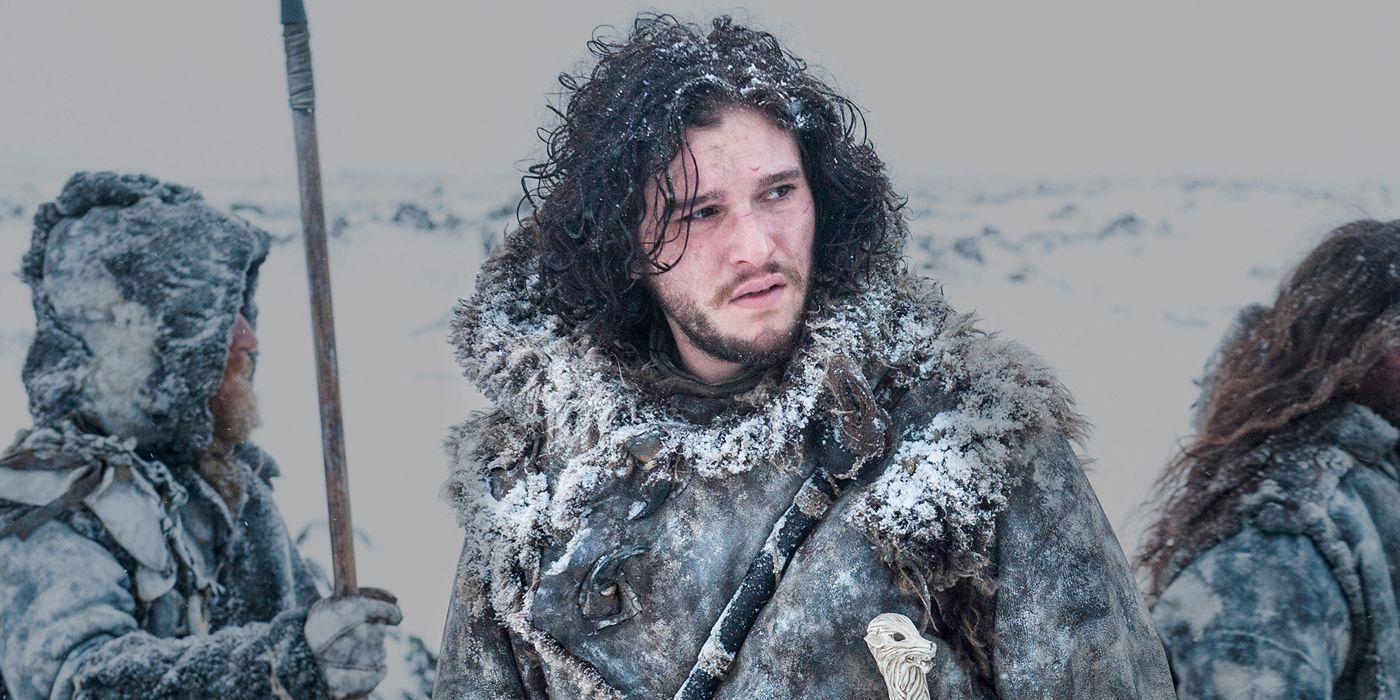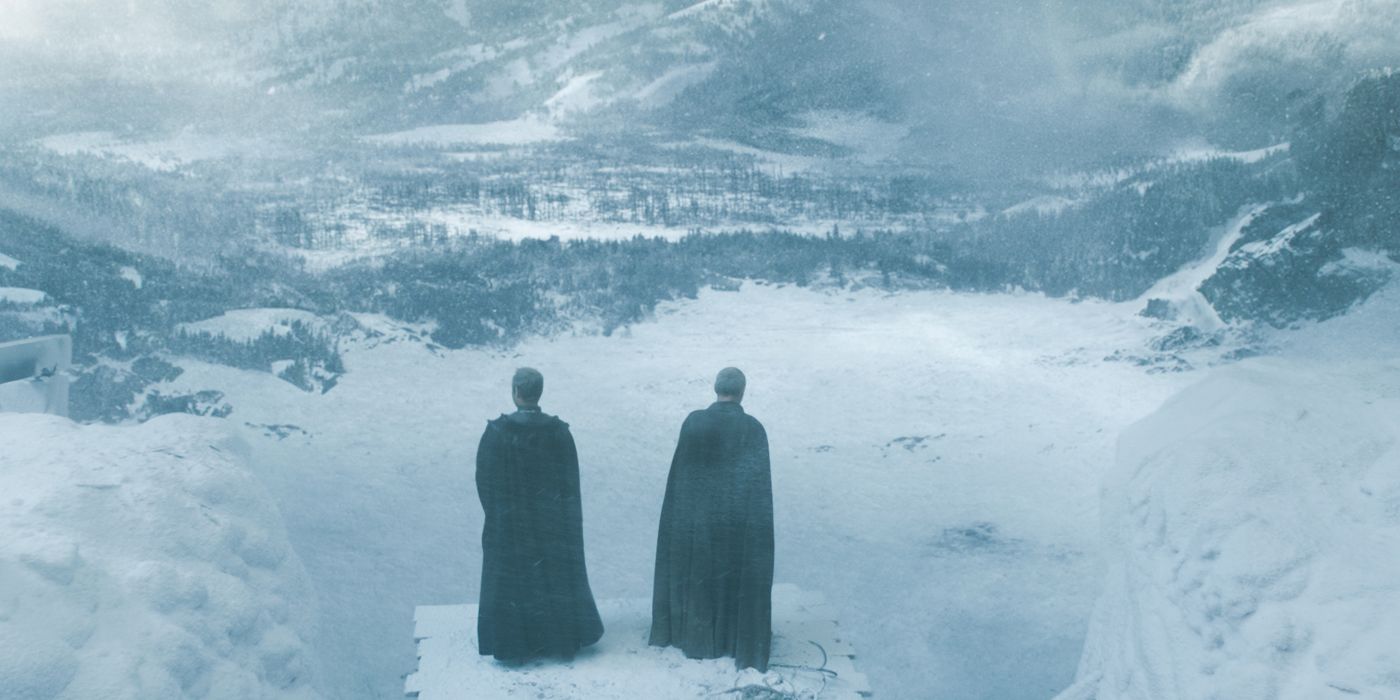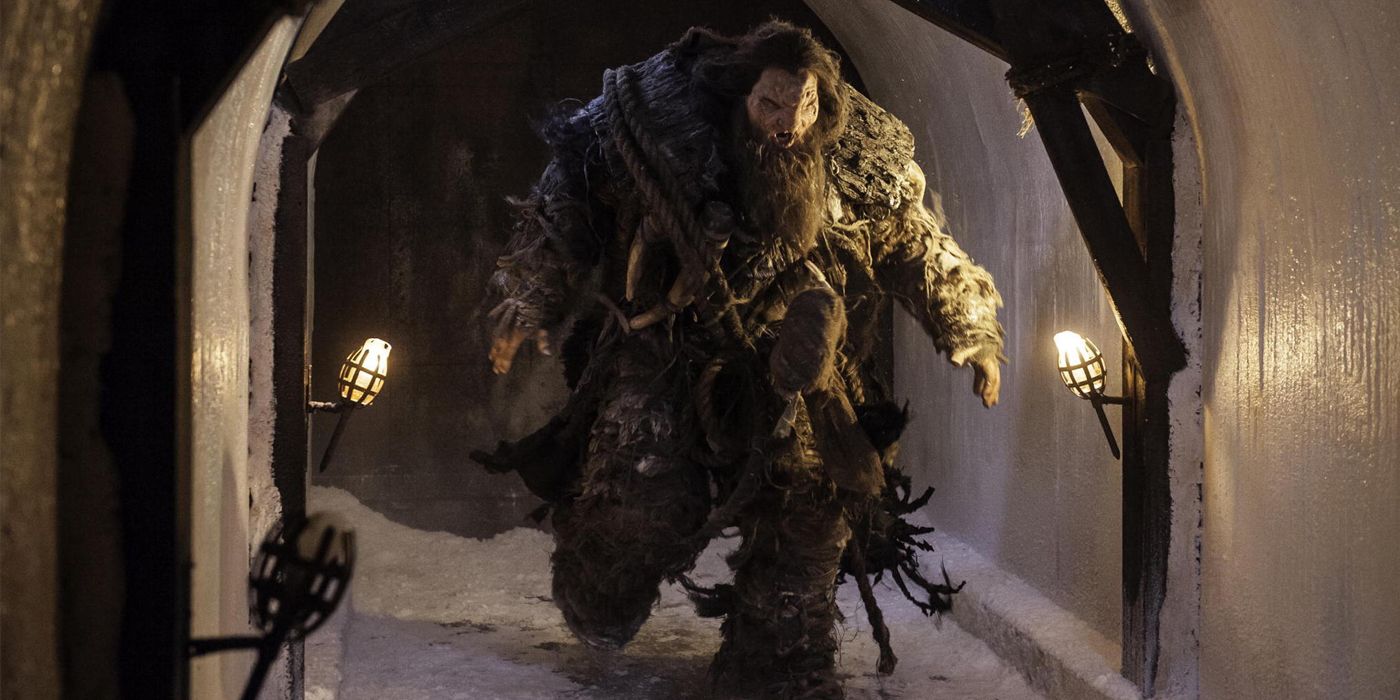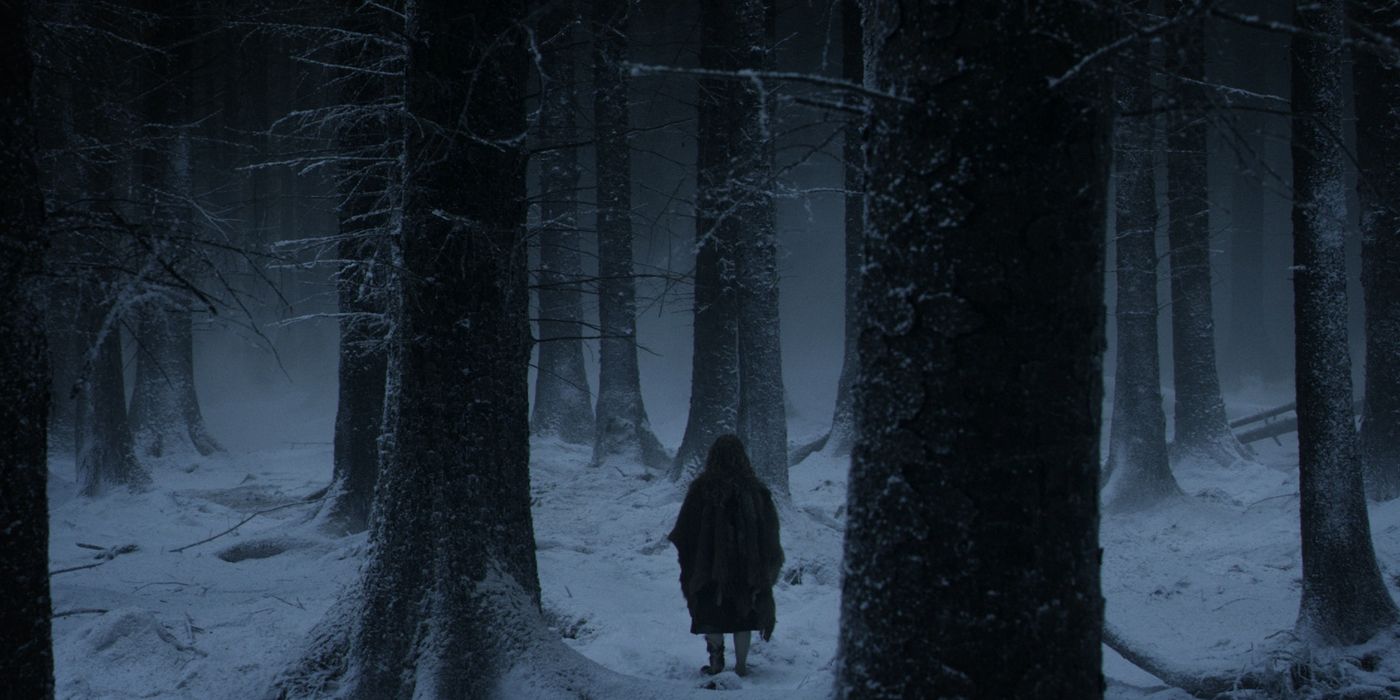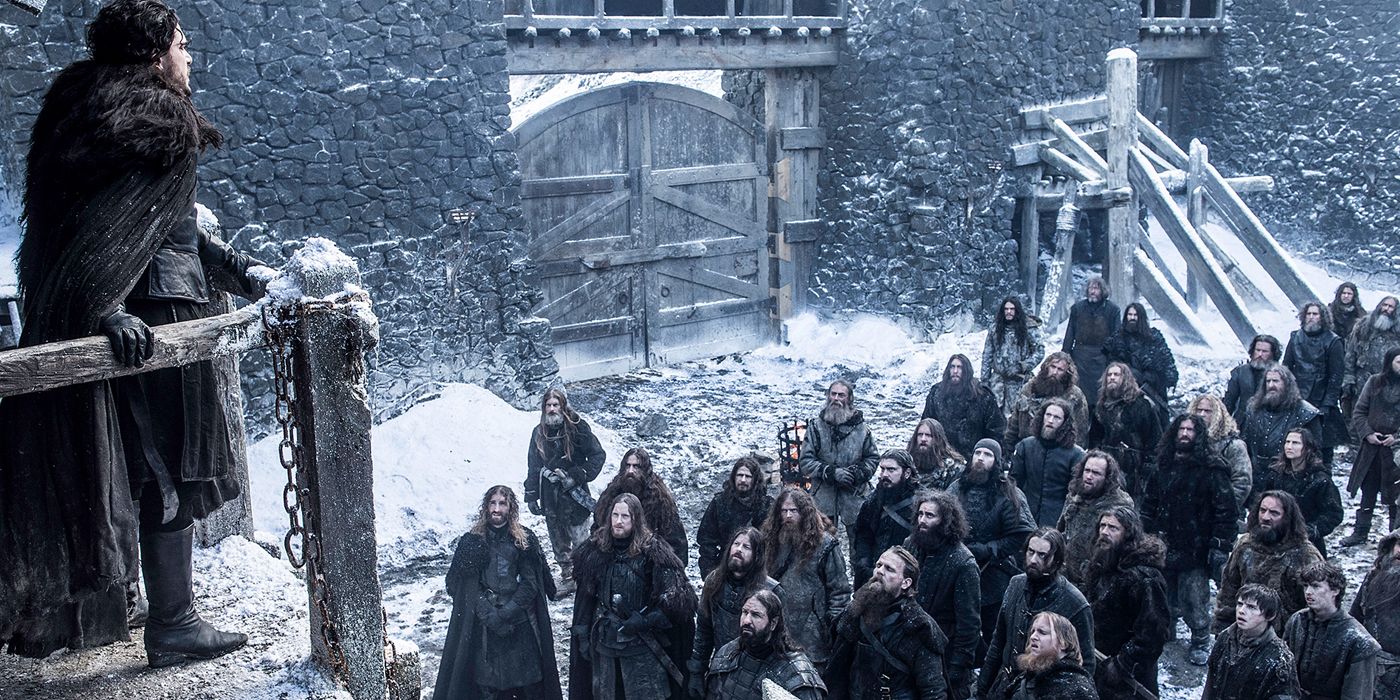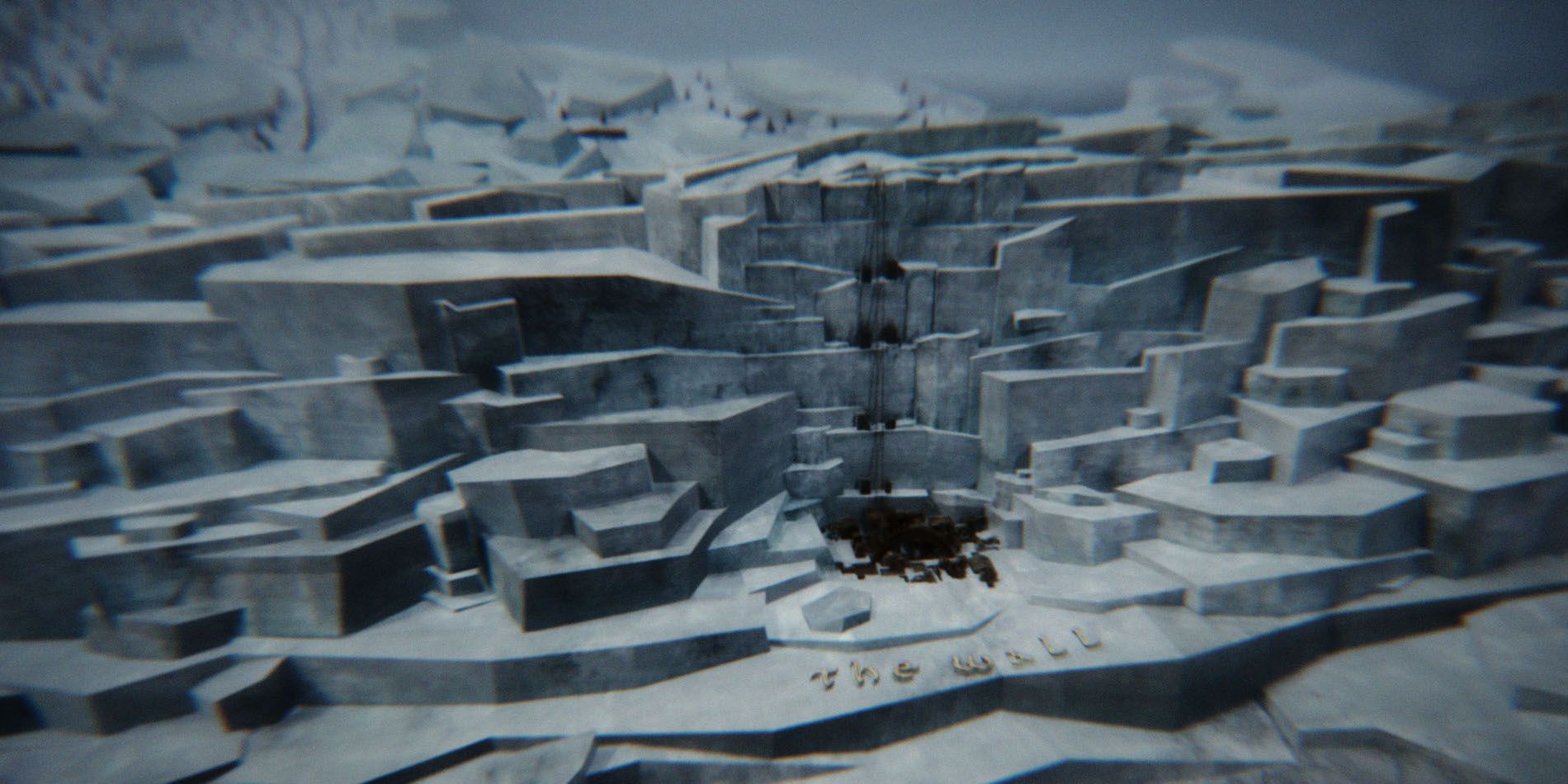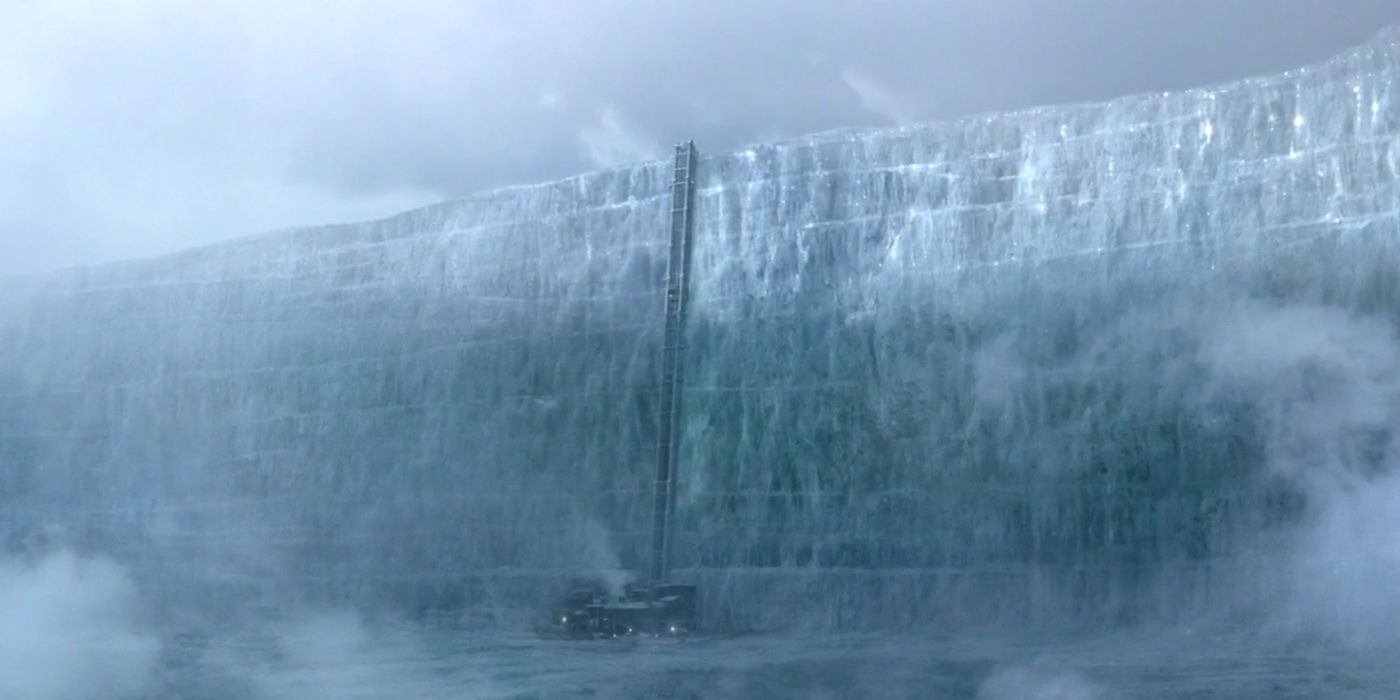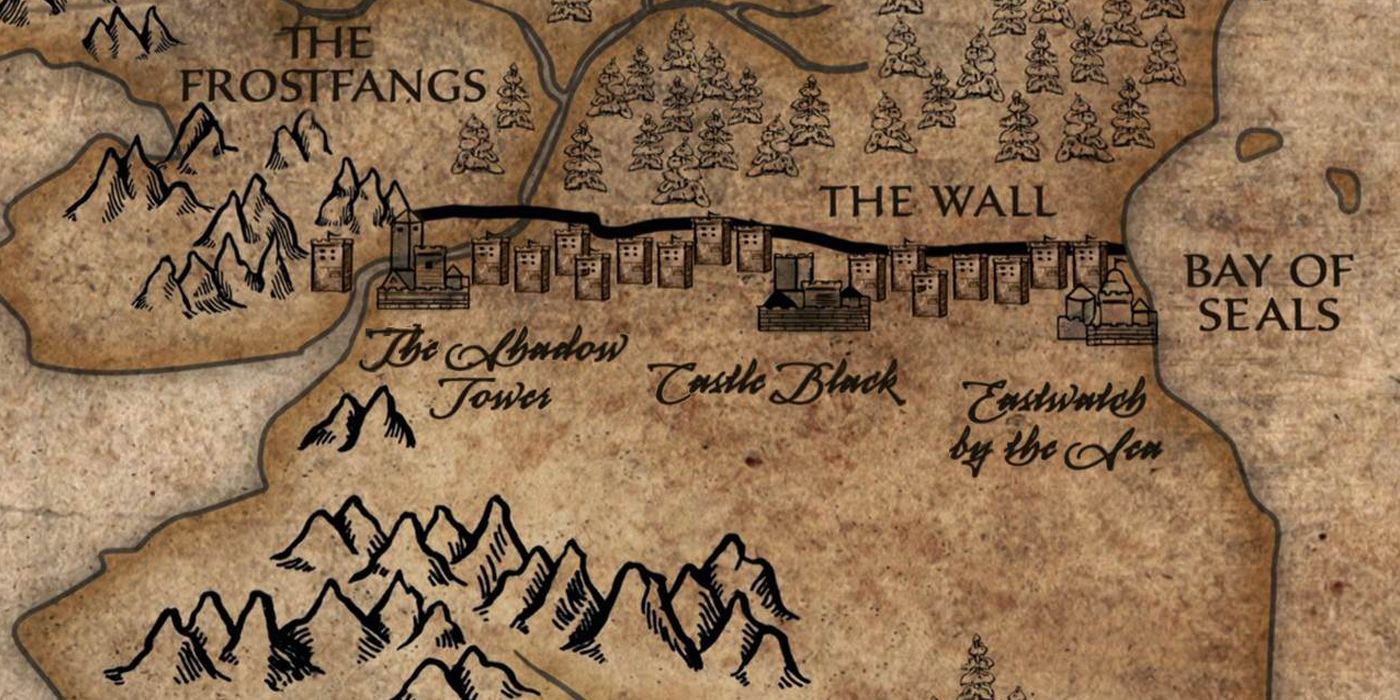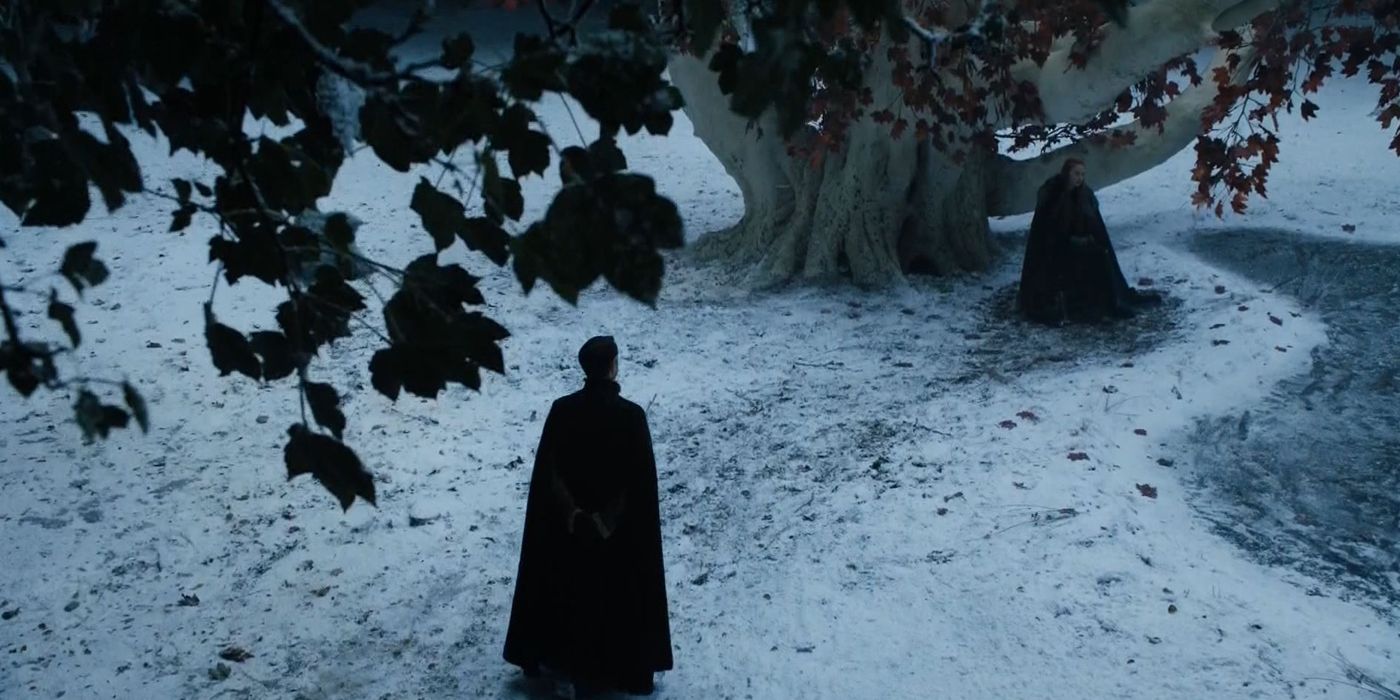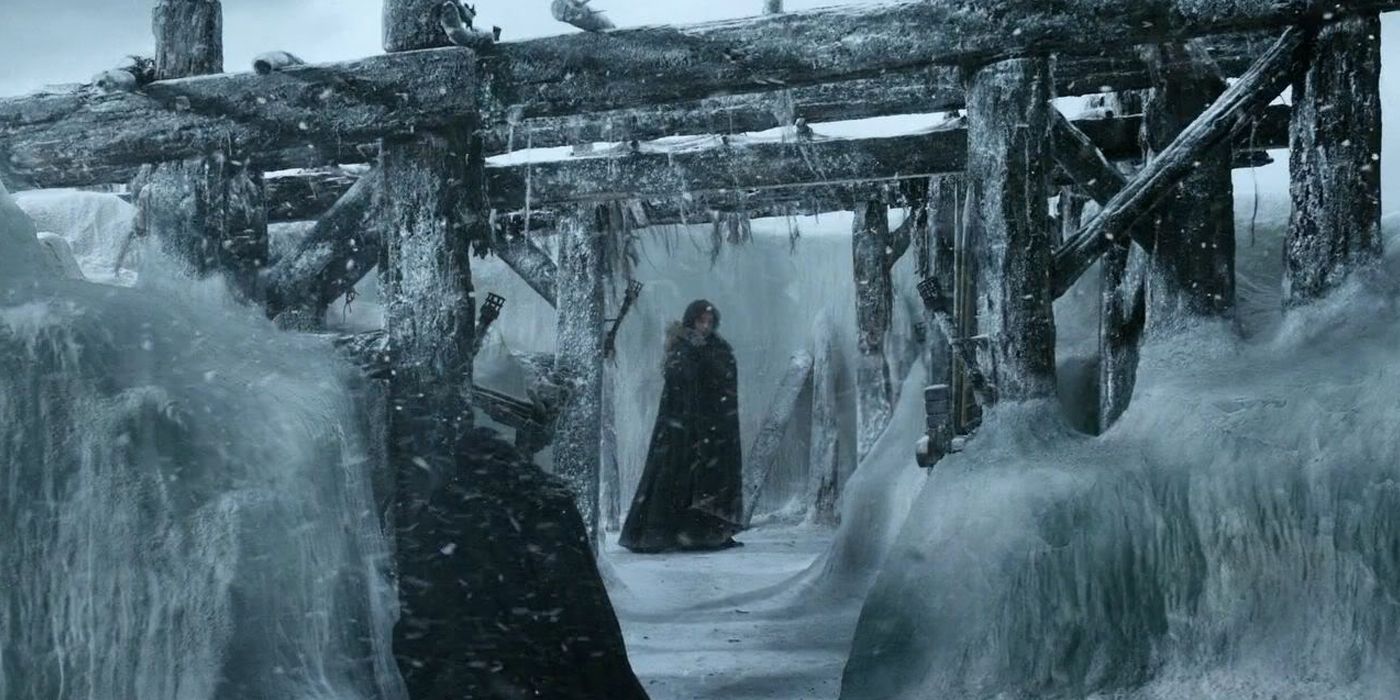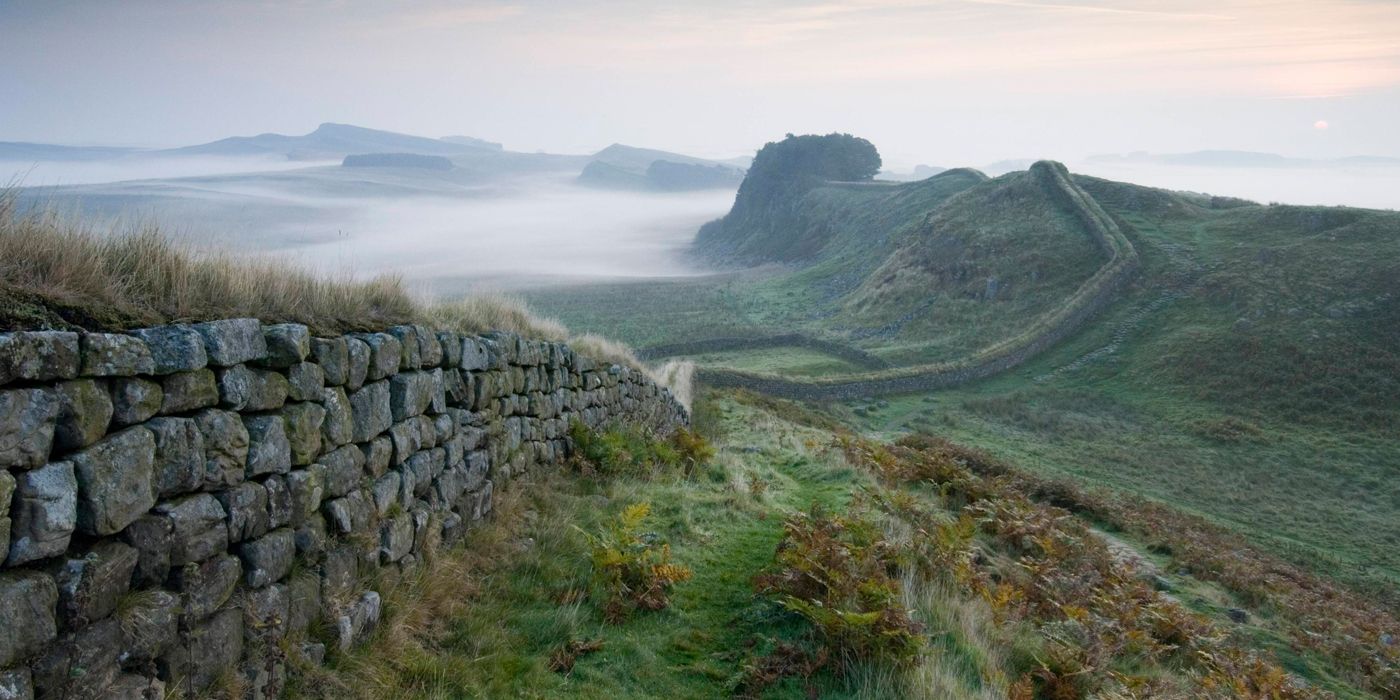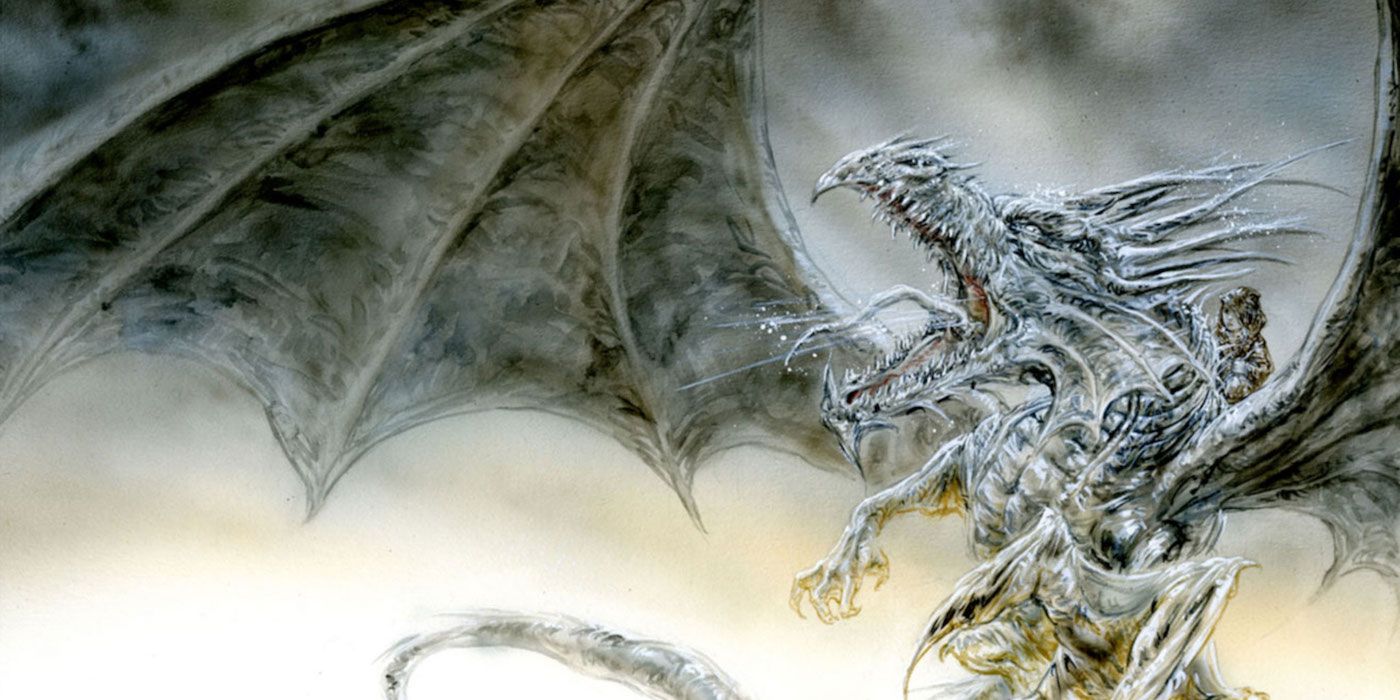Between the Seven Kingdoms and the deep North, there is The Wall. It's a frozen behemoth — a giant barricade defending anyone not entirely sold on being some cannibal family's Sunday feast — warding off the wildlings (as well as any other nasties that might want to sneak through as well). At first glance, the Wall might seem simple enough to understand (made of ice, very big, cold), but George R. R. Martin doesn't skimp out on the details. He created a world. It's not a real world, mind you, but under Martin's supervision, it may as well be.
With the penultimate season of Game of Thrones now underway, and with the office betting pools starting to take shape, audiences are whetting their appetites for a wintery bloodbath in Westeros. So, in honor of the new season, it's time to get yourself consumed by a world that George R. R. Martin saw fit to invite readers in to explore. And in this case, the focus is centered strictly on the Wall. Keep reading to check out 15 Things You Didn't Know About The Wall.
15. It's Allegedly Enchanted With Protective Spells
Never judge a book by its cover. Especially when the book is a giant wall of ice.
Despite its fairly bland appearance (ice is ice is ice), the Wall has far more up its sleeve than it lets on. It's rich with history, and within its history are secrets — secrets that may very well have ties to strong, impenetrable magic. There isn't much in the way to confirm the fact that the Wall is enchanted, but the chances of this being true are strong. It was designed to protect, and even though magic has only just recently started poking its head back into the Westerosian mainstream, that's not to say that, once upon a time, magic was the key to the Wall's survival.
Whether or not this mystery ever gets solved, it's safe to say that magic existing within the Wall is a solid presumption. What with magical characters already having a difficult enough time getting through its doors...
14. Jon Snow Was The 998th Lord Commander
The Wall has taken some serious blows in its time. War after war, wildling attack after wildling attack, the Wall is no stranger to battle. That said, however, it might have never survived for as long as it has without someone in charge — someone in a position of power to keep it standing. Someone in the form of the Lord Commander.
Stationed within the Wall is the Night's Watch — a band of soldiers whose main objective is to keep the Wall intact. For all the years that the Wall has been standing, the Night's Watch has been led by the Lord Commander to fend off whatever dangers might come their way, and in the fifth season, Jon Snow was made the 988th Lord Commander. Naturally, that position only lasted so long (what with the mutiny and all), but his place among other Lord Commanders of the post goes to show just how long this military establishment has been running, as well as how seriously it's taken.
13. The Wall Used To Be More Respected
When Jon Snow officially decides that he's going to head North and devote himself to the Night's Watch in the very first episode of Game of Thrones, it isn't met with much enthusiasm. Most of the characters he mentions this to try to talk him out of it, and for good reason. Noble though it may be to devote one's life to a potentially life-threatening cause, that isn't exactly the case at the Wall. At least, it's not anymore. Over the years, the Wall lost the respect it used to have, and its reputation (and that of the men who manned it) rapidly dwindled.
The Wall was for warriors; men who earned the respect of fellow Westerosian. Eventually, however, this changed. The Night's Watch became nothing short of a prison for criminals who were looking for an alternative to prison. By the time Jon joined the Night's Watch, the Wall's reputation paled in comparison to its former glory.
12. The Climb Up The Wall Would Have Been Impossible
Scaling mountains is one thing, but scaling the Wall is a different story. Nevertheless, Jon Snow and his merry band of wildlings manage to pull it off. In the third season of Game of Thrones, they work together to hopefully make their way to the top of the icy fortress. Though they ultimately meet success (despite losing some companions along the way), it begs the question of whether or not this sort of feat could even effectively be pulled off. And the answer is — according to a professional mountaineer — no.
Wired spoke with Katie Mills, an experienced climber who has powered through her fair share of impressively intimidating summits. According to her vast knowledge of mountain-climbing, their attempt to "simul-climb" (Jon and the wildlings tying themselves to each other so as to not fall) just wouldn't work. Not on a vertical climb.
So, epic though the scene might have been, reality came second to entertainment in this case. Not that any fans are really complaining.
11. It's 300 Miles Long And 700 Hundred Feet Tall
With Game of Thrones, the word "epic" certainly comes to mind. Whether that's referring to the scope of the story and the map, the quality of fighting in its battles, or the personal goals of its characters, there is hardly a more appropriate word. However, when it comes to the Wall, this word is especially relevant.
Seeing the Wall on the show, audiences get a general idea that it's fairly enormous. That said, they're not given the full taste. The Wall stands at a healthy 700 feet (just about nicking the clouds) and covers a distance of roughly 300 miles (that's over 5,000 football fields). So, whether you're a Wildling or White Walker, sneaking through isn't exactly a simple feat. In fact, it's hardly even a doable feat. Their best bet is to just give up. You know, assuming the Wall survives past the next two seasons...
10. Instead Of Normal Gates, It Has Gated Tunnels
Your classic fortress has a drawbridge, a moat perhaps, and a set of a sturdy iron gates. However, in Game of Thrones, going the "classic" route isn't always the norm. Sure, it takes a significant amount of influence from the Middle Ages, but the series is no stranger to visual innovation.
Take the Wall, for instance. Seeing as it's a fortress, one might expect it to copy typical fortress architecture. But does it? Not exactly. The Wall was built to protect, and all of that unnecessary fluff simply went out the window (plus, how exactly does someone maintain a moat when it's constantly frozen over?). No, instead of classic Medieval wear, the base of the Wall consists of a pathway of gated tunnels, lengthening the time it would take intruders to breach the fortress — which itself would be close to impossible.
9. The Forest Is Growing Dangerously Close To The Wall
Nothing like a creepy forest, eh? Between Harry Potter's Forbidden Forest, The Lord of the Rings' Fangorn Forest, and Game of Thrones's aptly named Haunted Forest, generally wooded areas have earned themselves a bit of a nasty reputation. What with them being dark and mostly void of human life, they're only as magical as the daylight permits. Once the sun sets, the horrors seem to sprout.
In fact, speaking of the Haunted Forest — the forest just north of the Wall — the trees have more or less (whether purposefully or not) been working against the wellbeing of the Night's Watch. It used to be customary for any trees within a half mile of the wall to be cut down, so as to make sure no enemies had decent places to hide. But over the time, the trees have returned, inching closer and closer towards the Wall, as if to remind them about the horrors that are bound to find them soon enough. The Night's Watch simply doesn't have the manpower these days to maintain the barrier.
8. Only Three Castles Defend It
What with the Wall being 300 miles wide, it's only natural that it would need quite a bit of protection. That said, time has not been kind to the Wall. It's still as tough as ever, but the manpower has dwindled considerably over the years, and as a result, some cutbacks to had to be made. Where there were was once genuine power manning these grounds, a mere three castles survive by the time Jon Snow is first sworn in to the Night's Watch.
The castle that everyone is aware of is Castle Black — the head office, if you will. This is where the bulk of the time spent at the Wall takes place. The other two remaining castles are The Shadow Tower and Eastwatch-by-the-Sea. The Shadow Tower is located towards the west, and Eastwatch is the only castle belonging to the Wall that is located on the waterfront.
7. There Are 19 Castles In Total Along The Wall, But They've Never All Been Manned At Once
Speaking of castles located on the Wall, there are nineteen in total. Sadly, however, sixteen of them may as well be ghost towns these days, having been abandoned over the years due to dwindling members of the Night's Watch. But even in the prime years of the Brothers in Black, even though there are nineteen castles, only seventeen of them have ever been manned at a single time.
The other sixteen castles are as follows: Greenguard, Westwatch-by-the-Bridge, The Torches, Sentinel Stand, Long Barrow, Greyguard, Rimegate, Stonedoor, Sable Hall, Hoarfrost Hill, Woodswatch-by-the-Pool, Oakenshield, Icemark, Queensgate, The Nightfort, and Deep Lake.
Now, assuming the Wall remains standing by the end of the series, might the other houses within Westeros consider helping supply soldiers to man these abandoned castles, so as to more efficiently guard the Seven Kingdoms from the evil in the North? That remains to be seen, but it's worth some passing speculation.
6. It's Assumed To Have Been Built By Brandon The Builder
So, who exactly built the Wall? Good question. Though there are general ideas as to who might have been at the head of its construction, there isn't anything concrete. But the widely-held belief is that Brandon Stark (aka Bran the Builder) was the man in charge.
Evidence supporting this belongs to legend. It is believed that Bran acquired the help of fantastical creatures to help handle such a massive a massive undertaking, and these fantastical creatures allegedly consisted of giants and children of the forest. Their ideals may have differed, but the need for protection is what ultimately united them. Again, according to legend.
In case the name Brandon Stark sounds familiar, look no further than the son of Ned himself, Bran (aka the new Three-Eyed Raven). Now, if Bran ends up "warging" into one of Dany's dragons, and ends up destroying the Wall (fire and ice), then that would make for some fine connective threading indeed.
5. Castle Black Wasn't Always The Watch's Headquarters
Before Castle Black took over as the primary headquarters on the Wall, there was The Nightfort. It's the largest and oldest castle of the nineteen, and is, in fact, one of the most fascinating. By the time the series begins, The Nightfort is nothing more than ruins — which are rich with a considerably macabre history.
Before it was abandoned, some twisted events took place, including a scenario similar to Arya Stark's revenge against Walder Frey (a cook baked a king's son into a pie, and then served the pie to the king). Legend has it that the cook was transformed into a giant rat, and that rat still resides in the ruins of The Nightfort to this very day. But aside from that single event, The Nightfort is rich with history and peculiarities, and one of its more intriguing details is the Black Gate, an underground passageway made of weirwood that allows entrance into and out of the Wall.
4. Castle Black Doesn't Have A Godswood
Godswood plays an important role in Game of Thrones. It's a sacred area dedicated to the Old Gods, and when characters need a place for thinking or praying, that's where they go. However, if you happen to be joining the Night's Watch and your faith falls in line with the Old Gods of the Forest, then you have to swear your allegiance in a godswood, in front of a heart tree. The only problem is that Castle Black doesn't actually have its own godswood. So... it requires a bit of traveling.
In the first season of the series, Jon Snow swears his allegiance to the Night's Watch. In order to so, however, he has to cross the Wall and enter the haunted forest. Thankfully, he doesn't have to go it alone (what with Sam Tarly also being sworn in alongside him and other members of the Night's Watch being present as witnesses), but still...
3. The Wall Can Defend Itself By Shedding Layers Of Ice
If there had to be a single M.O. in the Game of Thrones series, it's self-defense. Whether you're the Protector of the Realm, a simple peasant just trying to get by, or, in this case, a giant wall of ice, watching one's own back is a strict necessity. With everyone backstabbing, throat-slitting, and skin-flaying at will, there's no such thing as being too careful.
So, even though the Wall obviously can't wield a sword (as far as we know, at least), it still has ways of looking after itself. When the going gets tough, the Wall has the ability to shed layers of ice, so as to repel climbers trying to infiltrate its innards. Whether or not the Wall has any more tricks up its sleeve remains to be seen, but given its history of being full of surprises, there's no point in counting anything out this far along in the series.
2. It Was Inspired By The Real Hadrian's Wall
Unsurprisingly, while writing the Song of Ice and Fire series, George R. R. Martin took inspiration from real-life history. A history buff to the bone, he stole bits and pieces from history here and there and sprinkled it throughout his Westerosian creation. This is most likely why so much of his material feels as though it could have actually happened (assuming you ignore the magical elements). In fact, even the Wall was peeled straight out of reality — though with a considerable amount of modifications, to say the least...
The Wall was inspired by Hadrian's Wall (aka the Roman Wall) in the UK. In reality, the dangers beyond the wall were the Scots; in Game of Thrones, it's the wildlings and White Walkers. There is a considerable difference in height, but in terms of width, it's 84 miles. Still not quite measuring up to the Wall, but we mere humans didn't have the luxury of giants or magical, forest-dwelling children.
1. It May Contain An Ice Dragon
There is hardly a shortage of secrets in Game of Thrones. Whether in its characters or its landmarks, nothing is always as it seems — and mostly because secrets are all some of these characters really have to hold onto. What with power hanging over everyone like a freshly sharpened pendulum.
As it turns out, though, one of the most massive secrets within the series belongs to the Wall itself. Though there is no concrete proof of this, there is a general theory that, deep within the belly of the Wall, there lives a sleeping Ice Dragon. With the battle between the living and the dead coming to a head, it's only a matter of time before the series starts to roll out the red carpet for every secret its been hiding — and with the Wall serving as such a prominent landmark for this particular war, a dormant ice dragon capable of spreading some serious destruction is absolutely possible.
—
Is there more to the Wall than this list revealed? Cozy up in your Iron Throne and let us know in the comments!

